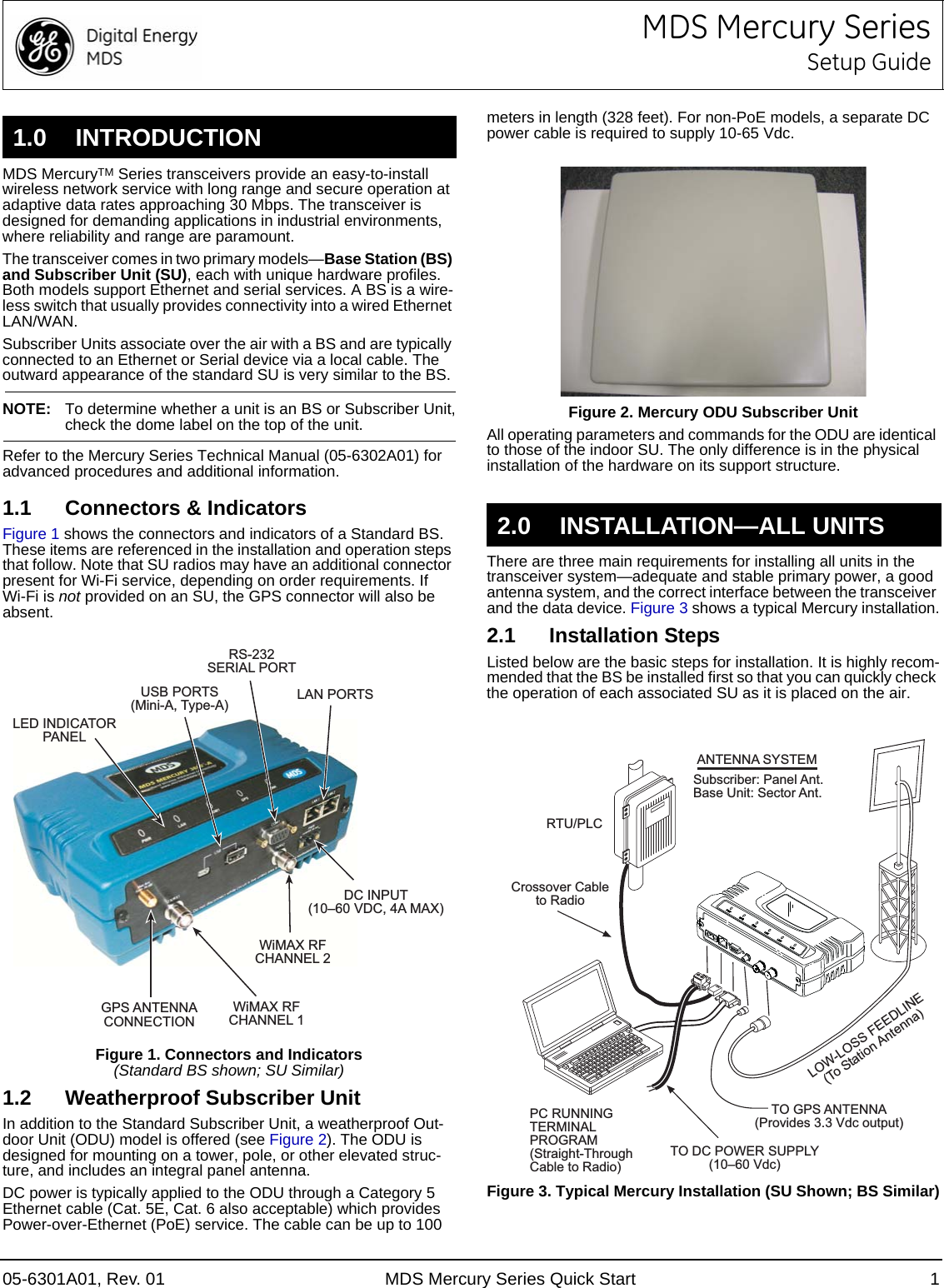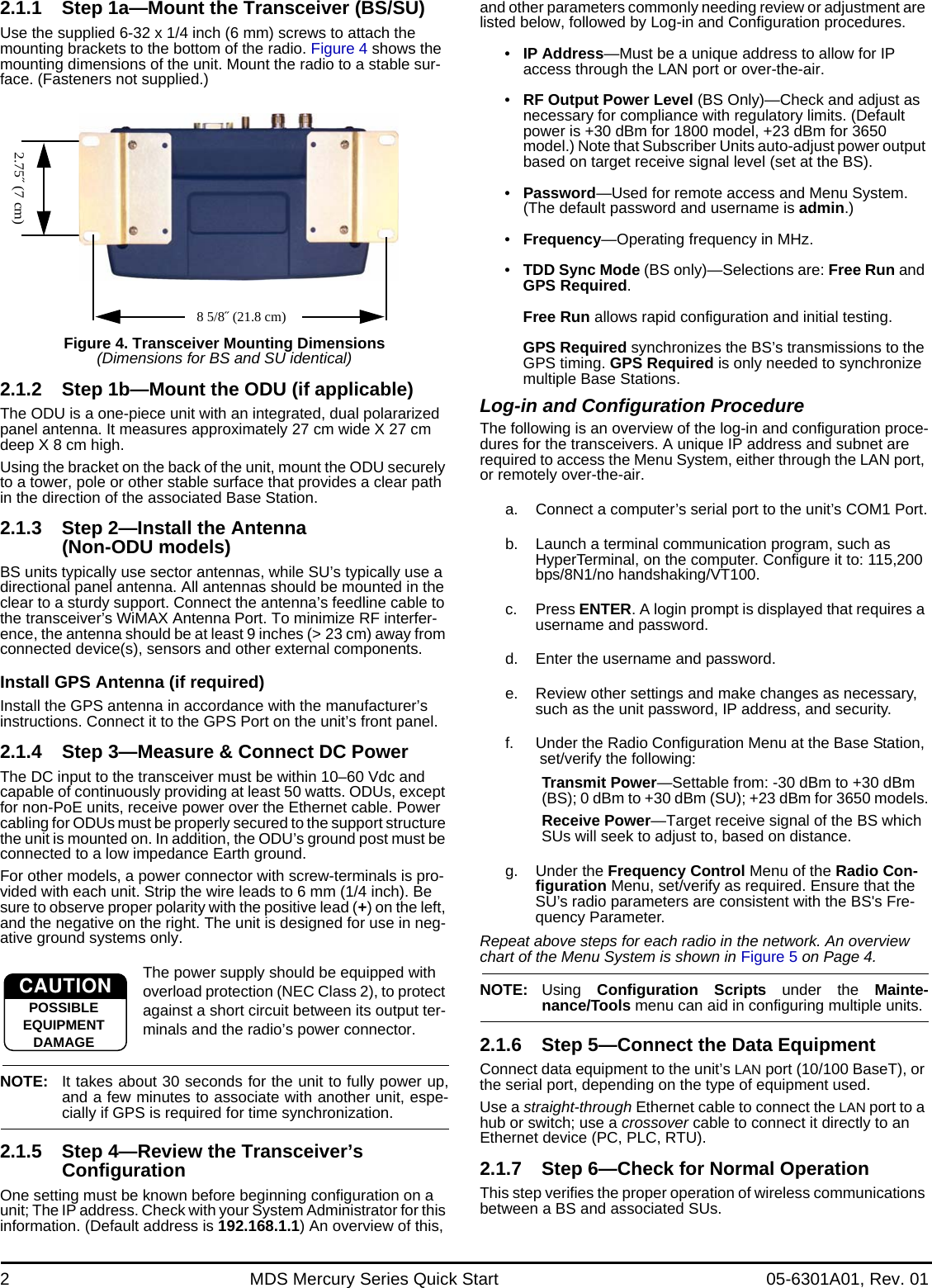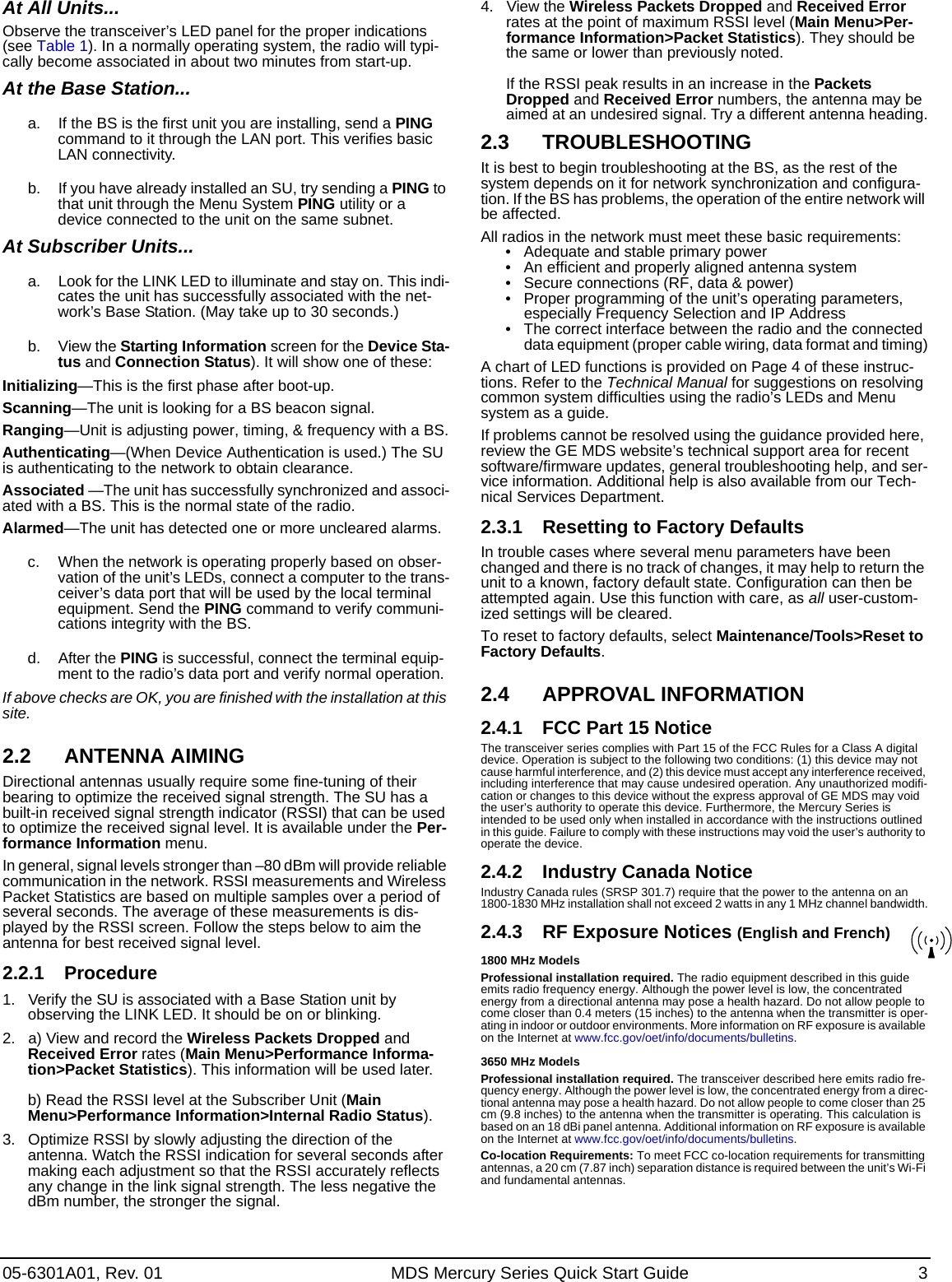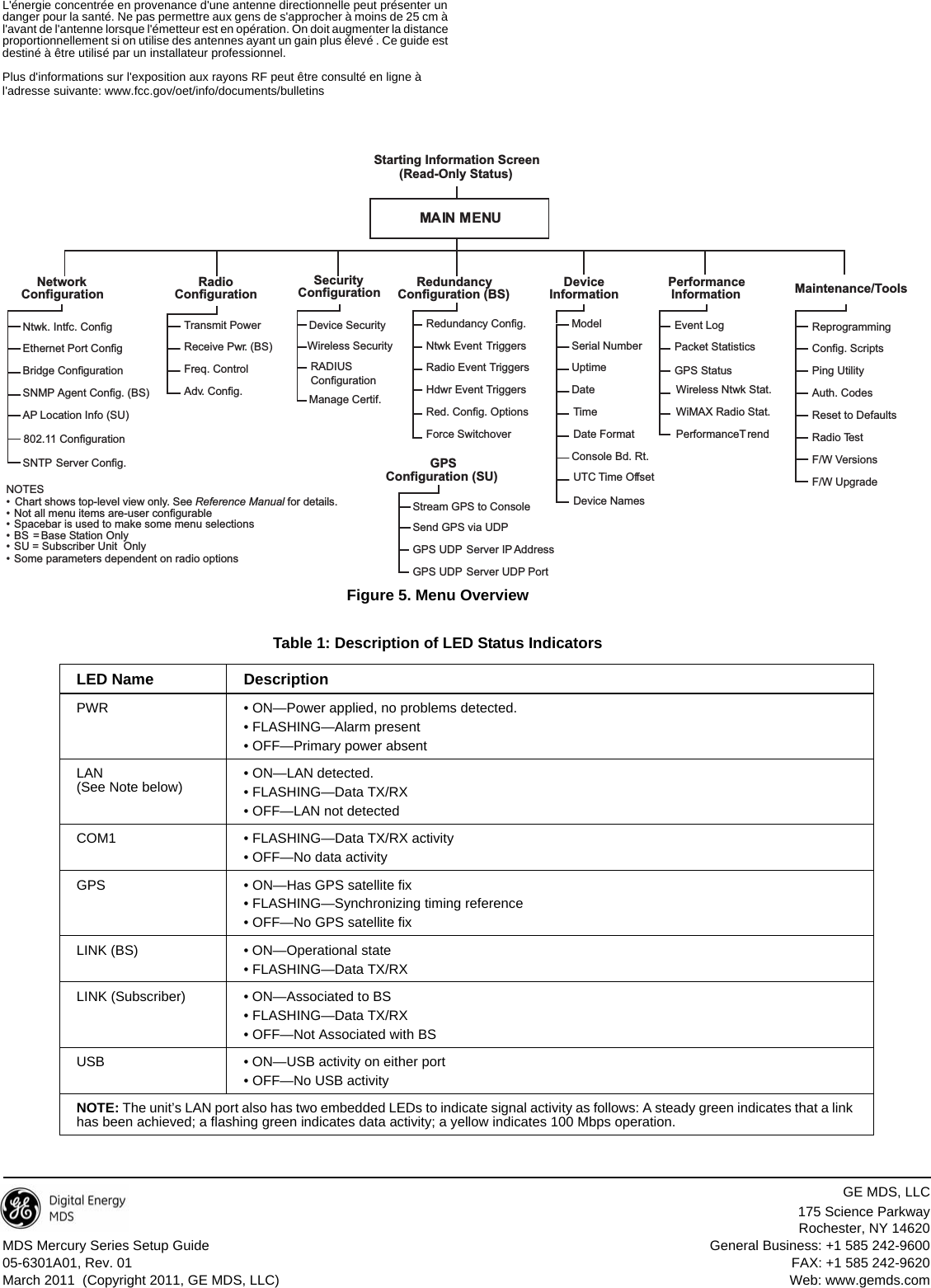GE MDS DS-MERCIDU3A WIRELESS IP/ETHERNET TRANSCEIVER User Manual 05 6301A Mercury MIMO Setup Guide with ODU
GE MDS LLC WIRELESS IP/ETHERNET TRANSCEIVER 05 6301A Mercury MIMO Setup Guide with ODU
GE MDS >
05-6301A-Mercury_MIMO-Setup_Guide-with_ODU



